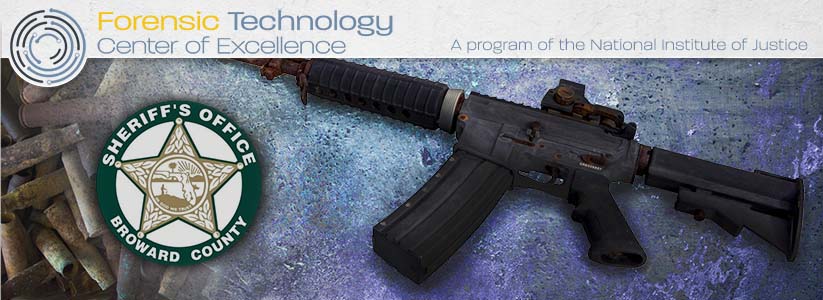The Effect of Time on Rusted Firearm Identification
Since the development of early firearms in the mid-1200s, the best material for making critical parts for weapons has been iron-based metal. While iron and steel (an alloy metal that contains iron) are popular materials due to their strength and resilience, they are susceptible to chemical reactions when interacting with the environment. The most common chemical reaction of concern is corrosion or rust, which causes metal to deteriorate or dissolve. Corrosion and chemical reactions most often occur in wet and humid conditions. If firearms are not properly cared for or are left in these conditions, it could have adverse effects on the firearms’ operability and could affect the firearms’ individual characteristics.
While past research has been performed on the possibility of identifying characteristics on rusted firearms after they have been restored, there is little research on how long a firearm can be left to rust before an identification is no longer possible. Potential identification comparisons were performed on cartridge cases and projectiles after they were test fired through firearms that were left to rust for certain periods of time. This project evaluates the effects of rust on the common working surfaces of Glock and Smith & Wesson Sigma firearms that firearm examiners use to make an identification. The unpredicted data suggests that Glocks cannot be identified past three months of rusting while Sigmas can be identified at six months and possibly even longer.
Detailed Learning Objectives:
Upon completion of this webinar, attendees will learn:
- The adverse effects of corrosion and rust on a firearm’s operability and individual characteristics.
- The length of time a firearm, both with conventional and polygonal rifling, can rust before individual characteristics are altered or changed enough to where an identification can no longer be made.
- Whether the amount of time a firearm has been rusting can be estimated based on the condition in which it was found.
Note: You need to register a account at the Forensic Technology Center of Excellence to Enroll in the webinar.
Contact: Forensic Technology Center of Excellence
Link: If you have questions about this course, contact the FTCoE
Registration Dates: November 12, 2021 – January 6, 2022
Registration Status: Open
Eligibility: Free and open to all.
Credits: Certificate of completion




